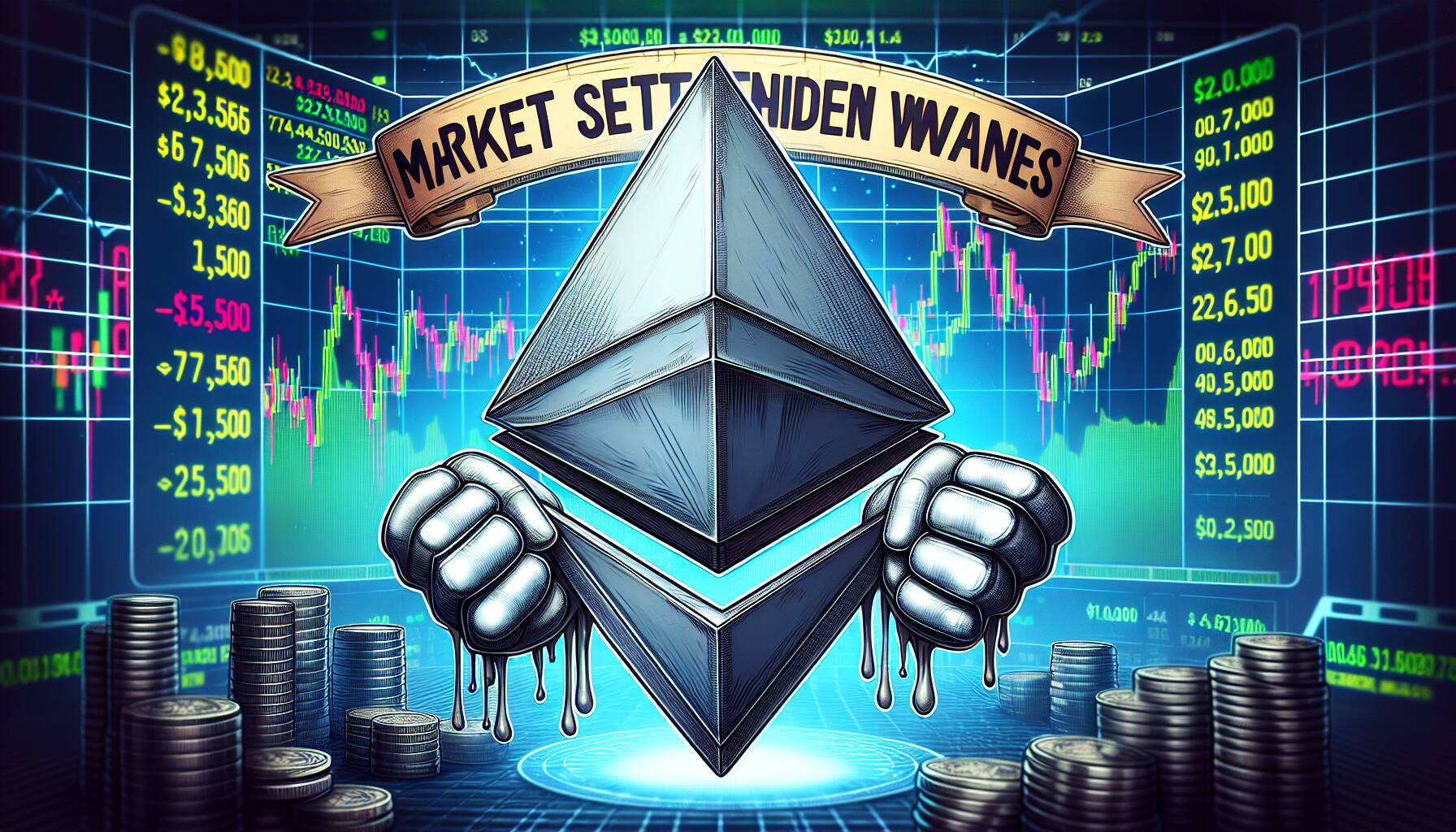In a challenging trading session, Ethereum (ETH) has experienced renewed downward pressure, dropping below the significant $2,500 mark amid increased selling activity. This decline comes at a time when broader financial markets are grappling with heightened global trade tensions and the potential for renewed tariffs from the United States, which has led to a shift in investor sentiment towards risk-averse assets.
Recent on-chain data has revealed considerable inflows to centralized exchanges, most notably a striking 385,000 ETH being transferred to Binance. This movement has sparked speculation that institutional investors may be opting to reduce their positions in the digital asset, contributing to the prevailing bearish atmosphere in the market. Despite a modest recovery bringing ETH back to around $2,506, analysts remain vigilant, closely monitoring whether buyers can sustain this momentum or if further declines are on the horizon.
“ETH traded within a volatile $48.61 range, showcasing its susceptibility to rapid changes in investor sentiment,” one analyst noted.
The price action initially demonstrated a bullish ascending channel before encountering heavy selling near the $2,550 threshold, which prompted a swift profit-taking response. During a particularly volatile minute, ETH plummeted from $2,521.35 to $2,499.09, with a remarkable volume of over 48,000 ETH exchanged in just two minutes. Following this spike in activity, trading volumes returned to normal, allowing the price to settle within the $2,504 to $2,508 range.
As the $2,500 level emerges as a crucial support point, the market sentiment remains precarious, with signs of distribution evident in recent volume patterns. As observers continue to analyze ETH’s performance, the focus remains on whether the bulls can successfully defend this key mark or if the cryptocurrency will face further challenges.

Ethereum Market Analysis
Key points from the recent Ethereum trading performance and market dynamics:
- Price Decline: Ethereum (ETH) dropped below the $2,500 level amid increased selling volume.
- Market Sentiment: Broader risk sentiment has weakened, influenced by global trade tensions and renewed U.S. tariff risks.
- Institutional Inflows: Significant inflows to centralized exchanges, particularly 385,000 ETH to Binance, suggest possible trimming of positions by institutional investors.
Market observers are monitoring if buyers can maintain the $2,500 support level amid fragile momentum.
- Technical Indicators: ETH experienced volatility with a price range of $48.61, forming a bullish ascending channel before breakdown.
- Sharp Reversal: The price fell sharply from $2,521.35 to $2,499.09 in a two-minute span, indicating heavy selling activity.
- Current Support Level: $2,500 is now an interim support level, but signals of further distribution indicate cautious market momentum.
Ethereum’s Fluctuating Fortunes: A Comparative Insight
Recent trading activities have placed Ethereum (ETH) in a precarious position, with market dynamics highlighting both its competitive advantages and notable disadvantages. As selling pressures mounted, ETH experienced a significant drop, falling below the crucial $2,500 mark. This downturn occurred amidst a backdrop of heightened global trade tensions and the looming threat of renewed U.S. tariffs, which have historically impacted investor sentiment across both traditional and digital assets.
In comparison to other cryptocurrencies, ETH’s recent performance mirrors trends observed in the broader market. Similar to how Bitcoin (BTC) reacted to geopolitical uncertainties, Ethereum’s price movements suggest that it increasingly shares the same vulnerabilities, making it susceptible to market volatility driven by external factors. The reported inflows of 385,000 ETH to Binance indicate a potential strategy by institutional investors to either reassess their positions or capitalize on price fluctuations, further complicating its market narrative.
The competitive advantage for Ethereum lies in its established infrastructure and continuous development within the decentralized finance (DeFi) sector. However, the downside is evident as on-chain data signals a possible distribution phase, creating challenges for those invested in ETH. The ability for buyers to defend the $2,500 level will be crucial, as failing to do so could encourage more selling pressure, leading to further declines.
This scenario could distinctly affect retail investors who might be influenced by fear, leading to hasty decisions in a volatile environment. Conversely, institutional players may find opportunities to enter at lower price points, leveraging their long-term strategies to weather short-term market fluctuations. As ETH attempts to consolidate around the $2,504 to $2,508 range, the question remains: will buyers step in to protect this level, or will market sentiment dictate another downturn?

















